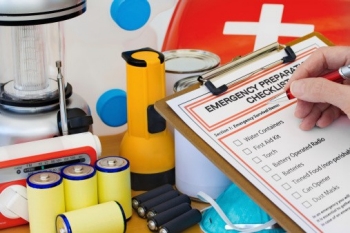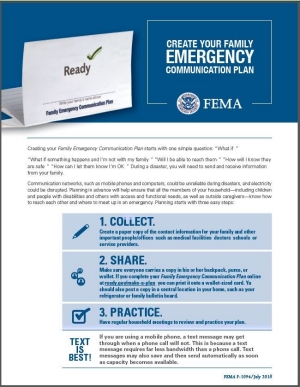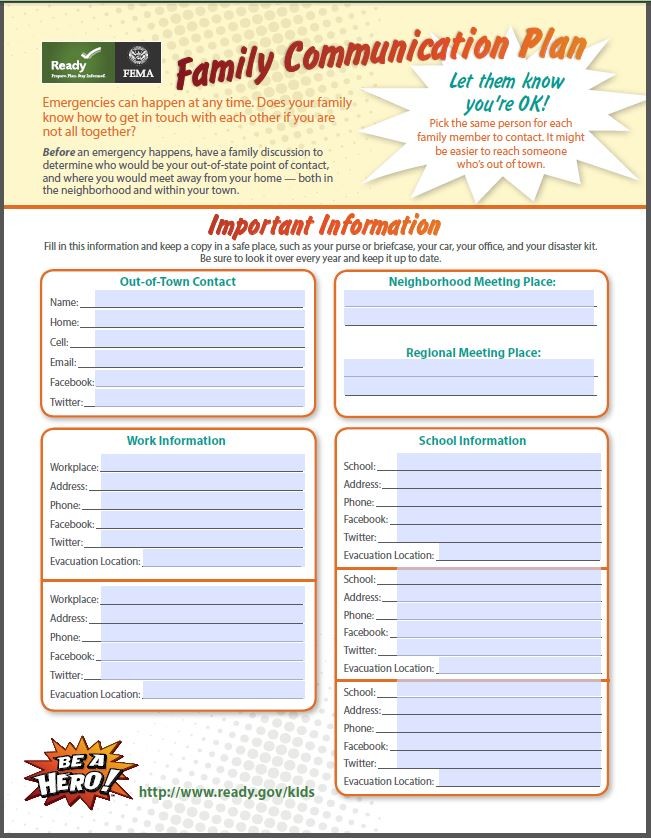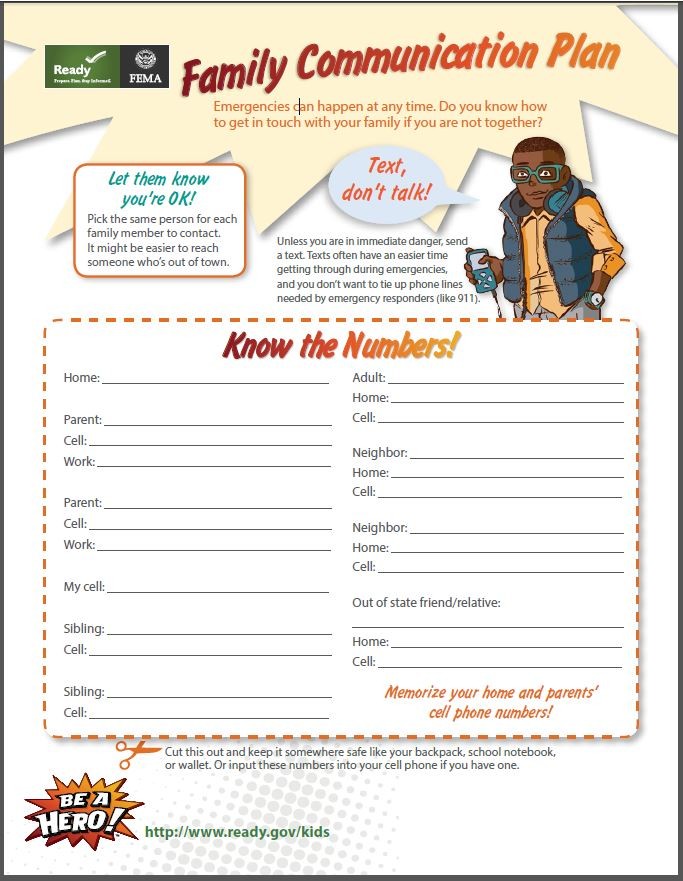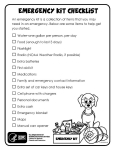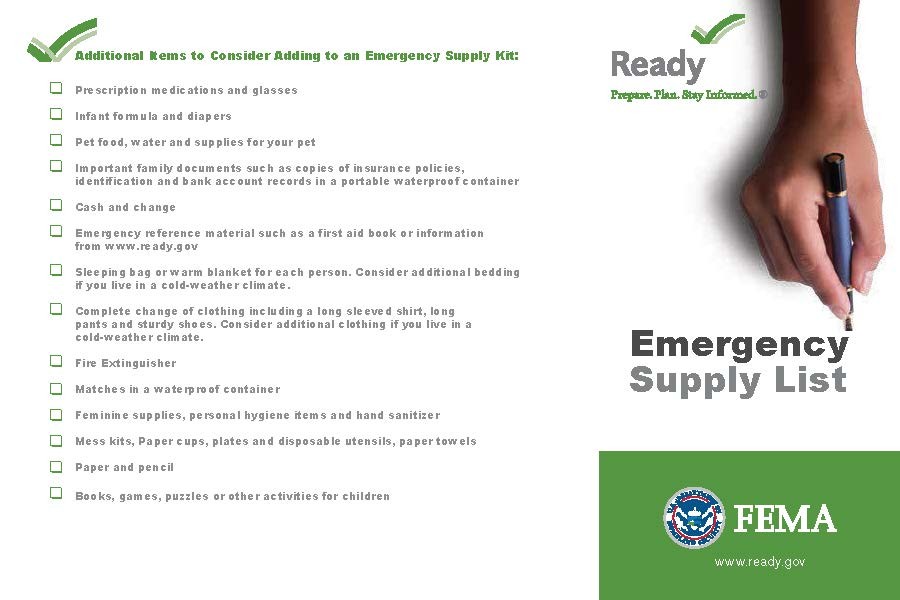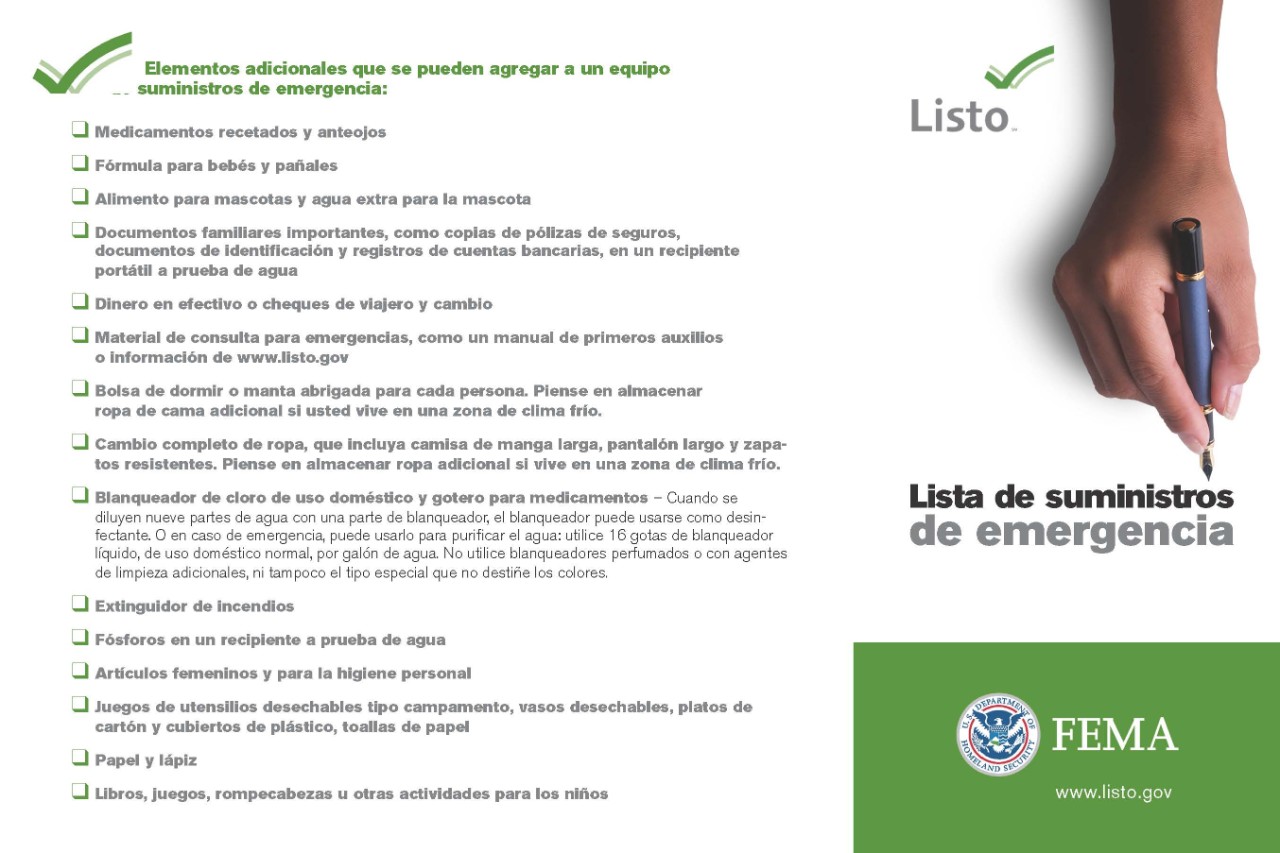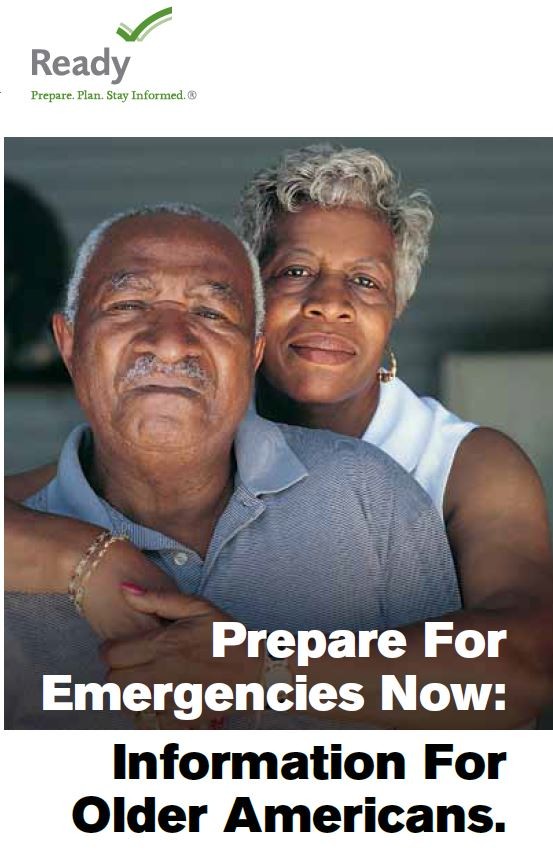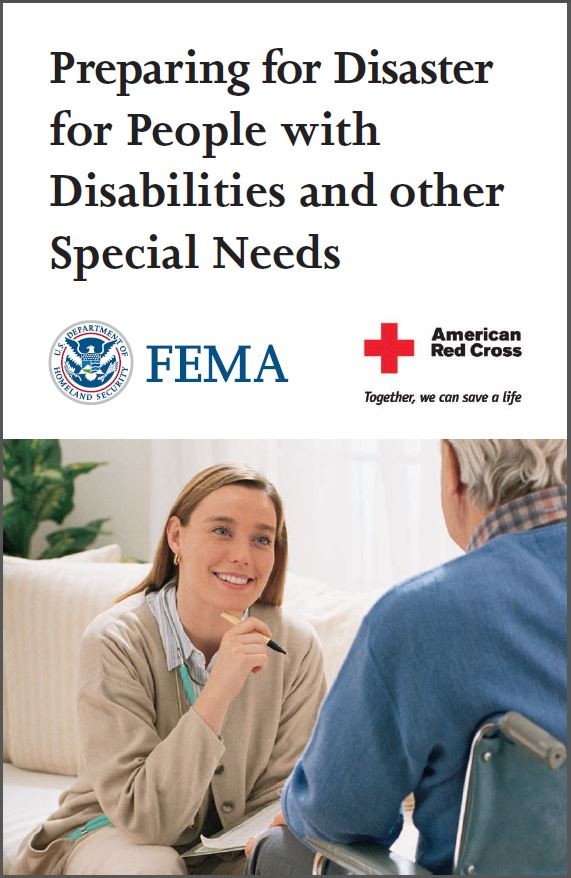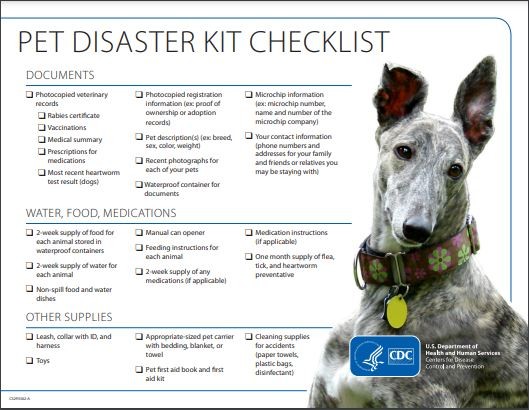Healthy Homes - Prepare for Emergencies
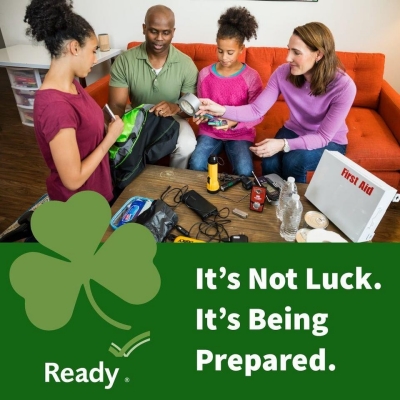
As disaster can strike at any time, it is important to have a plan in place. Tennessee weather can cause natural disasters like floods, tornadoes, and ice storms. Knowing which are more likely to occur in your area can help you prepare for emergencies.
Important considerations when creating a disaster plan include knowing:
- How you will receive emergency alerts and warnings
- Where you will shelter or evacuate
- How you will communicate with your household and loved ones
- If your disaster supplies kit is up to date
Visit Make a Plan for more information and make your plan BEFORE disaster strikes.
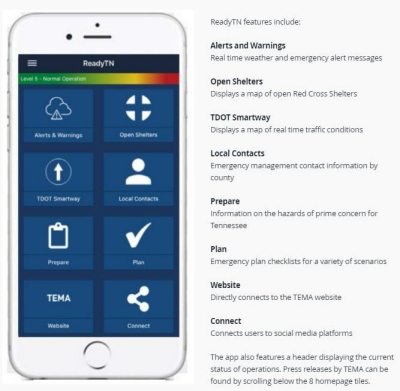
Wireless Emergency Alerts, or WEAs, are free alerts sent directly to your mobile device to alert you of severe weather, AMBER Alerts, and threats to safety. WEAs can be sent to you by your state and local public safety officials, the National Weather Service, the National Center for Missing and Exploited Children, the U.S. Geological Survey, or the President. All major providers participate in WEA on a voluntary basis. To be sure that your phone receives WEA alerts, contact your wireless provider.
The Tennessee Emergency Management Agency (TEMA) has a phone app called ReadyTN that provides emergency preparedness, response, and recovery information to Tennesseans.
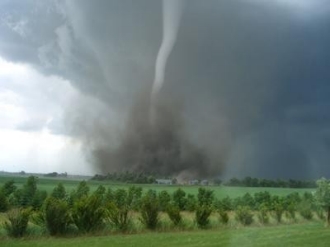
Knowing where you and your family will go during an emergency or disaster is one of the best ways to prepare. There are times when sheltering in your home or wherever you are located at the time is the safest thing to do. In Tennessee, weather events such as tornadoes may require you to shelter in place. To prepare for a tornado, identify and practice going to a safe shelter or a small, interior, windowless room on the lowest level of your home or sturdy building. Visit ReadyGov's "Taking Shelter from the Storm" to learn how to build a safe room in your home or small business.
Other emergencies may require you to evacuate immediately. It is important to have an evacuation plan as part of your overall preparedness plan. Identify several places you could go in an emergency such as a friend's or relative's home in another town or a motel. Choose destinations in different directions so that you have options during a more wide-spread emergency.
If you have pets, try to identify a place that will accept pets. Most public shelters only allow service animals.
If you are encouraged to evacuate, local officials may have set up mass care shelters. You can search for open shelters by texting SHELTER and a ZIP code to 43362. Example: SHELTER 01234 (standard rates apply). Learn more by visiting: http://www.disasterassistance.gov/.
When an emergency happens, you may not be with your family, friends, or pets. Your family may include children who need an adult to help them. Or your family may include seniors who have difficulty with mobility or need special medical care. Your family's emergency plan should account for these scenarios and how to communicate with one another should you be in different places when disaster strikes.
- What if something happens and I'm not with my family
- Will I be able to reach them?
- How will I know they are safe?
- How will I let them know I'm OK?
Communication networks that our cellphones and computers rely on may be disrupted during an emergency. Planning how to answer the above questions in advance is vital to insure everyone in your household, including children, people with disabilities, others with access and functional needs, and caregivers, know how to reach each other and where to meet up in an emergency. Planning involves three easy steps:
- Writing out a paper copy of everyone's contact information within your family as well as other important people or offices such as medical facilities, doctors, or service providers.
- Make sure everyone in your household carries a copy of this plan in their backpack, purse, or wallet. You should also post a copy in a central location of your home such as a refrigerator or family bulletin board.
- Practice! Have regular household meetings to review and practice your plan.
Remember during an emergency, if you are able to use your cellphone, a text message may get through better than a call.
You can access blank, printable communication plans below:
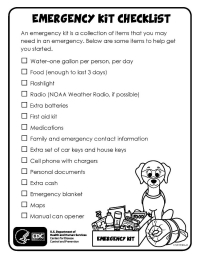
Being prepared means having your own food, water, and other supplies to last for at least 72 hours. A disaster supplies kit is a collection of basic items you may need in the event of an emergency. Sometimes, important items such as prescription medications or other personal needs are overlooked on disaster supplies checklists. Do you wear contact lenses? If so, would you think to include contacts solution in your kit?
Below is a list of recommended items. Some may not apply to you or those in your household. This is also not an exhaustive list. A great exercise for you and your family is to make a list of every little thing you use throughout the day to identify items that may be needed in your disaster supplies kit.
When assembling your kit, store items in airtight plastic bags and put your entire disaster supplies kit in one or two easy-to-carry containers such as plastic bins or a duffel bag. Though there are many recommended items below, make sure the weight of your kit is manageable for your household.
Disaster could strike at any time, so it is recommended that you have a disaster supplies kit at home and at work. Your work kit should prepare you to shelter in place for at least 24 hours and include food, water, medicines, and comfortable walking shoes. Your work kit should be stored in a "grab and go" case. If you drive on rural roads, have a long commute, or drive in winter weather, consider another kit for your car.
Once your kits are assembled, it is important to maintain your kits. Check your kits at least every 6 months to replace expired food and medicines. It is also recommended that you replace non-store-bought water every 6 months. Maintenance checks are also a good time to recharge portable power banks.
Below are recommended items for your disaster supplies kits.
- Water (one gallon per person per day for at least three days, for drinking and sanitation; include an additional half-gallon per person per day for at least three days if cooking is expected)
- Food (at least a three-day supply of non-perishable food; consider dietary restrictions, food allergies and sensitivities, and medical conditions such as diabetes)
- Sanitation and hygiene items (hand sanitizer, moist towelettes, toilet paper, menstrual pads or tampons, garbage bags, and plastic ties)
- First aid kit (first aid reference guide, non-latex gloves, easy-to-use non-mercury thermometer, waterproof bandages, gauze, tweezers, scissors, antibiotic cream or ointment). For additional ideas, visit American Red Cross.
- Medications (consider making a list of all medications per household member and including list with kit)
- Prescription and home-use medical devices, such as:
- Eyeglasses or contact lenses and disinfecting solution
- Hearing aids and extra batteries
- Wheelchair or walker
- Asthma inhaler
- Epinephrine autoinjector
- Blood sugar monitor and test strips
- Oxygen supplies
- Dust masks (to help filter contaminated air)
- Manual can opener for food
- Battery-powered or hand crank radio and a NOAA Weather Radio with tone alert
- Flashlight
- Extra batteries
- Whistle (to signal for help)
- Plastic sheeting and duct tape (to shelter in place)
- Cash, traveler's check and change
- Local maps in case cell phone service fails or phone dies or is lost
- Cell phone chargers and a charged portable power bank (these are small devices that can usually hold a charge for 4-6 months so make recharging these a part of your kit's maintenance plan)
- Extra clothes and blankets (this may not be needed throughout the year but consider adding ahead of colder months)
After assembling kits, assess everything that has a battery, adapter, or cord and include extras of each.
- Infant and child care supplies (diapers, formula, baby food, portable crib, pacifiers, books or toys for toddlers)
- Individuals with disabilities (See more information here: Preparing for Disaster for People with Disabilities and other Special Needs)
- Seniors (See more information here: Prepare for Emergencies Now: Information for Older Americans)
- Pets (See more information here: Pets Diaster Kit Checklist (Dogs and Cats))
Supplies to Consider for COVID-19
Currently, the Centers for Disease Control (CDC) recommends people include additional items in their kits to help prevent the spread of coronavirus or other viruses and the flu.
Consider adding the following items to your emergency supply kit based on your individual needs:
- Cloth face coverings (for everyone ages 2 and above)
- Soap
- Hand sanitizer
- Disinfecting wipes
- Nonprescription drugs and other health supplies (pain relievers, stomach remedies, cough and cold medicines, fluids with electrolytes, and vitamins)
Important Documents and Information
You should include a copy of your household's Communication Plan with the kit. Depending on your situation, you may need documents to file insurance claims, pay bills, take care of injured family members, or manage the responsibilities associated with a death. Though this resource mentions Colorado, it is a great list of documents you should locate, copy, and store in a safe place (fire proof box, with an out of town friend or relative, or consider backing up virtually).
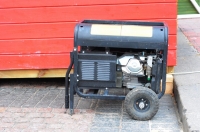
A great investment for when electrical power is out during an emergency, generators can be very dangerous. Generators can cause carbon monoxide poisoning if not used properly.
Never use a generator inside your home, garage, carport, basement, crawlspace or near an outside window, door or vent. Generators should be at least 15 feet away from buildings. Even at 15 feet away, air flow patterns could still blow carbon monoxide into your home through attic vents, windows, or doors, so it important to have a working carbon monoxide detector inside the home.
As you maintain your emergency supplies kit, take the opportunity to check your smoke and carbon monoxide
detectors are working properly and have back-up batteries for when the electricity is off.
For more information on how to avoid carbon monoxide poisoning, visit our Carbon Monoxide page.
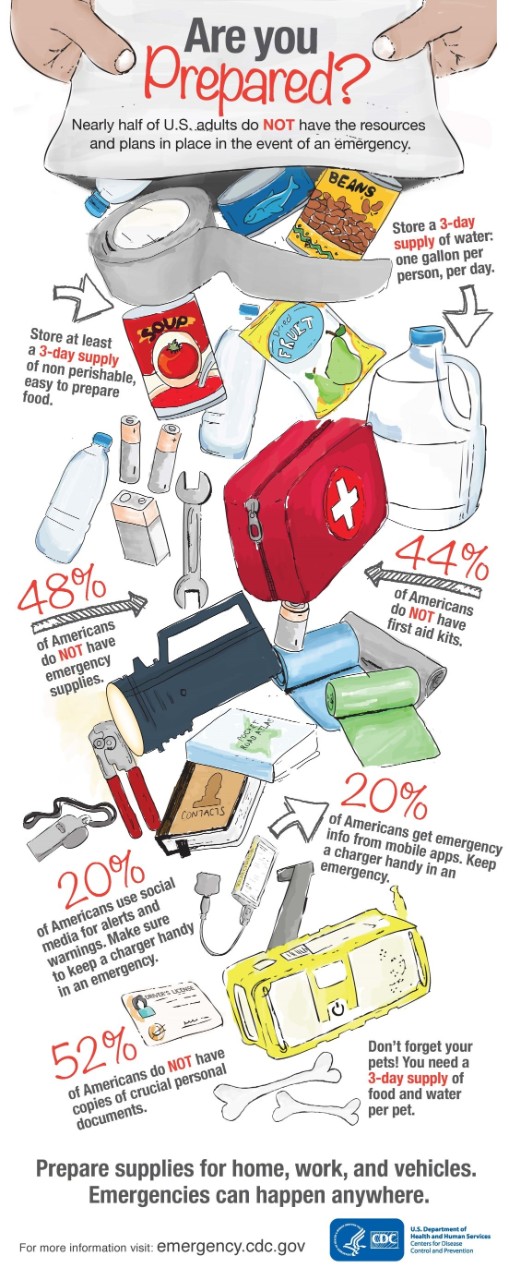
Government resources
Ready.gov
Plan ahead for disasters
www.ready.gov
Ready Kids!
www.ready.gov/kids
September is National Prepardeness Month
www.ready.gov/september
Federal Emergency Management Agency (FEMA)
How to build a kit for emergencies
www.fema.gov/press-release/20210318/how-build-kit-emergencies
Centers for Disease Control and Prevention (CDC)
Prepare Your Health
www.cdc.gov/prepyourhealth
Disability and Health Emergency Preparedness
www.cdc.gov/ncbddd/disabilityandhealth/emergencypreparedness
Emergency Preparedness and Response
emergency.cdc.gov/
Additional resources
American Red Cross
How to build your emergency kit
www.redcross.org/about-us/news-and-events/news/2019/national-preparedness-month-how-to-build-your-emergency-kit.html
